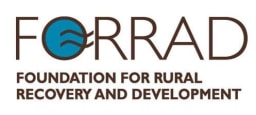
Alleviating Acute and Chronic Child Malnutrition in Bihar
- Raised
- $550
- Goal
- $70,000
This appeal is to work with 600 children and their communities in tackling malnutrition in Bihar. This initiative contains the components of therapeutic nutrition, vitamin supplementation, deworming, environmental hygiene and food diversity. We aim to raise USD 70,000 - the resources required per child working out USD 120.
- Background and Rationale
The most horrifying aspect of malnutrition in Bihar is that it is not news. It is a story so old that the rest of the country is almost inured to it. Chronic and acute malnutrition does not cause headlines anymore.
Bihar faces significant challenges in child health, nutrition, and overall development. Infant and child mortality rates are higher than the national average, with 46.8 infants and 10.2 children per 1,000 dying in their early years. The National Family Health Survey conducted in 2019 - 21 (NFHS-5, 2019–21) reported the following details related to children under 5 in Bihar: 43% stunted and 41% underweight. These are the stark figures to consider in Bihar:
Number of stunted children: 6,294,938
Number of anemic children: 9,157,349
Number of wasted children: 3,376,118
Number of severely wasted children: 1,317,014
There are various causes for malnutrition - poverty, very small landholdings, climate change, poor dietary diversity, migration, neglect, irregular immunisation, social marginalisation and the absence of sanitation. Addressing this requires a sustained, community-rooted, nutrition-first approach that takes into consideration these various factors and works with the existing public health systems and the community.
In 2023, FORRAD piloted a therapeutic nutrition initiative for children in Bihar. We assessed 128 children from age 2 - 12 years. 47 children were under the age of 5, out of which 2 children presented with Severe Acute Malnutrition (SAM) and 2 of them with Moderate Acute Malnutrition (MAM). We also identified 2 severely underweight children and 10 moderately underweight children. 21 children (44%) were found to be stunted, signifying chronic malnutrition in them.
In the age group of 5-12 years, comprising 81 children, there were 14 children who were underweight and 15 stunted children revealing alarming levels of severe and moderate acute malnutrition. In response to this, a community-based therapeutic nutrition pilot was initiated.
Key features:
- Homemade, protein-rich food blend (ragi, gram, jaggery, peanuts)
- Deworming and Vitamin B complex supplementation
- Mid-upper arm circumference, MUAC-based monitoring
- Community participation via anganwadis and field workers
Outcome highlights:
- >80% children shifted from red/yellow MUAC to green
- Noticeable physical changes: brighter eyes, energy levels, healthier skin
- Improved anganwadi attendance and parent engagement
- Vitamin A deficiency spotted and addressed in 2 children
- Waste and sanitation concerns flagged for future focus
This fundraiser builds on the work undertaken on addressing malnutrition by increasing the outreach in new areas.
- Objectives
The objective is to mitigate acute and chronic malnutrition in 600 children between 2–15 years from the most vulnerable communities in Dharhara and Gorma Panchayats in Silao block, Nalanda district of Bihar over a period of 3 years .
- Activities
The project has three main activities:
Therapeutic Nutrition and Clinical Monitoring
- Daily provision of homemade therapeutic nutrition blend, made using: sprouted ragi flour, sprouted gram flour, jaggery, and ground peanuts. The daily portions will be set as per individual requirements and titrated as per progress.
- Biannual deworming, Vitamin B complex for 3 months in a year, and Vitamin A supplementation as recommended.
- Quarterly measurements of height, weight, and mid-upper arm circumference and other clinical observations that indicate deficiency of iron, Vitamin D, vitamin A, and other skin infections.
Outreach and Community Engagement
Regular interactive sessions with:
- Parents and family members on child nutrition, immunisation, crop and food diversity, and hygiene practices.
- Teachers, ASHA, anganwadi and other front line workers on immunisation, identifying malnutrition, and prevalent diseases.
Sanitation and Environmental Hygiene
- Village-level campaigns on waste segregation, disposal, water safety, and hygiene (one every quarter).
- Collaboration with local panchayats and ASHA workers
- Expected Outcomes (2025–2028)
Improved nutrition and health indicators for 600 children
Increased awareness of linkages between agriculture, nutrition, health and hygiene.
- How you can help?
We aim to work with 600 children and their communities over the next three years. In order to be able to do this, we need to raise USD 70,000. Just USD 120 per child is the overall cost to make a significant improvement in her health and nutrition status.
